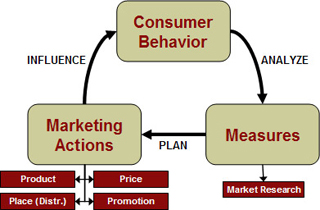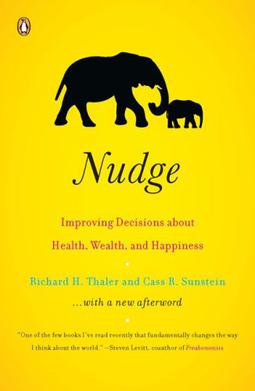please help a student out by taking this survey
help a student out
Please help a student out by taking a 2 minute survey for her semester long project. Click below.
Survey
Family with love to give
I’d like to introduce my niece and nephew, Nicki and Garrett. They are individually wonderful and caring people. Together they are loving, fun and supportive.

Aren’t they cute? Both Garrett and Nikki are athletic, having played hockey together for most of their childhood. Nikki is a kindergarten teacher and would do anything for the children in her class.

They would love to adopt a baby and give it a loving and caring home. From their letter to the expectant mother they hope to meet, “As we write this we can only imagine how overwhelming, stressful and emotional this time is for you. Without even having a face or name to you we can honestly say you must be one the bravest, selfless and strongest women out there.”

There are over 100,000 children put up for adoption each year in the United States alone. That means that there are around 100,000 mothers and expectant mothers who want the best for their children but may not be in a place to provide that love, stability and support. If you are one of those expectant mothers and want to find a loving expectant family, please check out Nikki and Garrett’s website here:
https://babywa2020.wixsite.com/adoption
I know a lot of students and young professionals. I ask, even if you are not in need of a loving family, please share this link because someone you know may be in need.
5 minute favors
I’m a big fan of the 5 minute favors rule. Basically, if someone asks you for a favor that is only going to cost you five minutes of your time and doesn’t compromise your values, do it. It is sort of an automatic pay it forward policy.
Usually in business, this 5 minute favor involves some form of networking. “Hey, can you introduce me to so and so?” “Do you know the hiring manager at a company you used to work for?” etc. I’ve done many of these requests and will happily do many more.
Today, however, I’m asking you for a five minute favor. My Marketing Foundations class has created a ten question survey that will take about five minutes to complete (see link below). Will you please do me a five minute favor and take the survey?
Shopping Survey – thank you in advance.
One more favor, and this one will take less than five minutes. Please like and share so that we can get as many respondents for my class to analyze.
Help a student out
My Foundations of Marketing class is doing a project on brick and mortar shopping, specifically regarding a department store. Please help by taking this very quick (10 question) survey.
How to prepare your marketing department for the Coronavirus – start by not panicking……yet
I’m a big believer in procrastination when it comes to panicking. Why panic today and steal all the pleasure out of panicking tomorrow? The coronavirus appears to be a great opportunity to panic but just not yet. As I’m writing this, and I have to qualify that considering how quickly the market is dropping, clearly investors are panicking. The Dow is down approximately 5000 points (17%) off of recent highs…..and it is still dropping. The financial pundits are blaming somewhere between most of the drop and all of the drop on the coronavirus. I’m not entirely sure that the coronavirus should get all of the blame, considering that the stock market has been growing double digits cumulatively since 2009.

The thing about the coronavirus is that we just don’t know how bad it could be. Right now, health officials are estimating the death rate of coronavirus is 3%, which is three times the rate of the flu. We don’t have enough information to know if the death rate will eventually be closer to flu levels of 1% or up to 20%. We don’t know if the virus will follow the flu seasonal pattern, which means it will largely disappear in the northern hemisphere in a month or two…..or not.
According to the CDC, there are only 15 confirmed cases in the US and only five states had any confirmed cases. Put in a glass is half full statement, there are 349,999,985 people in the US that do NOT have a confirmed case of coronavirus and there are 45 states that do NOT have any confirmed cases. Right now, the odds are with us.
Travel bans and restrictions have already been put into place and President Trump is considering adding more bans as more cases of coronavirus are being discovered around the world. The CDC is recommending people, businesses, organizations and schools plan for a significantly wider spread of the coronavirus. This means that fewer people will be traveling. More people are going to attempt to telecommute. My school has suggested professors consider how we will continue to educate even if live classes are discouraged.
What does this all mean to the marketer? It mean understanding your consumer and planning ahead for possible changes (good and bad), just like always. Consumers are starting to get nervous. I’ve heard of a number of people what are reconsidering their travel plans. Perhaps staying in the country for fear of a ban getting them stuck internationally. Some are avoiding trains, cruise ships and planes because they don’t want to risk exposure in such tight quarters.
Consider shifting your marketing efforts to (an ever greater degree) online. Be ready to shift even more of your efforts to online. If the coronavirus does not die down this spring, brick and mortar is going to be fairly empty. I also suggest that you pull as many campaigns towards the beginning of the year as possible. The risk of a recession this year has grown.
New semester – new assignments
Thank you to my foundations of marketing students for a great Fall 2019 semester. I’m still a new(ish) marketing professor and every class I learn so much more. Last semester was no exception. I’ve been able to finish all the grading, file away my (your) papers and really reflected on how to improve my classes for next semester.
Next semester, I’m teaching Foundations of Marketing again and, for the first time, Consumer Behavior. Both classes are really exciting for me. The Foundations of Marketing is exciting because this will be the third time I’m teaching the course. Each time, I feel a little more grounded in what material I want to cover and what exercises are meaningful. Consumer Behavior is very exciting to me because I am a huge fan of understanding the consumer. I personally feel that understanding the consumer is the most important aspect of successful marketing.
Now my appeal for help from the community. I’m looking for in-class exercises for both foundations of marketing and consumer behavior. I have a business that I think would be great exercise for them to evaluate and come up with suggestions. In addition, the Consumer Behavior class will do a purchase journal. Basically, I’ll ask them to track their purchases for a month and classify the type of purchase, the need it fulfills, etc. What else? Can anyone recommend other exercises, case studies, etc. that would be useful for a marketing class? Did you have any good experiences that I can borrow from?
Thank you in advance.
Nudge: Improving decisions about health, wealth and happiness
I read a fair deal. Well, that is when I have time. When I don’t have time I listen to book on tape on my commute. I might be a little old school but I haven’t switched over to podcasts yet. I’ve found navigation on podcasts apps to just be off putting. I try to make things easier by downloading the podcast but then when I’m done with it, there isn’t (at least there isn’t that I’ve found) an easy way to delete the one I’ve just finished and download the next one in order
Anyway, enough whining about the podcast app and onto my book review: Nudge: Improving Decisions About Health, Wealth and Happiness. Nudge was written by Richard H. Thaler and Cass R. Sunstein, published back in 2008. I’ve listened to it on audio a couple of times. I don’t like book reviews that don’t get to the point, so here’s mine: If you are any way responsible for influencing other peoples’ decisions, then this book is definitely worth the read.
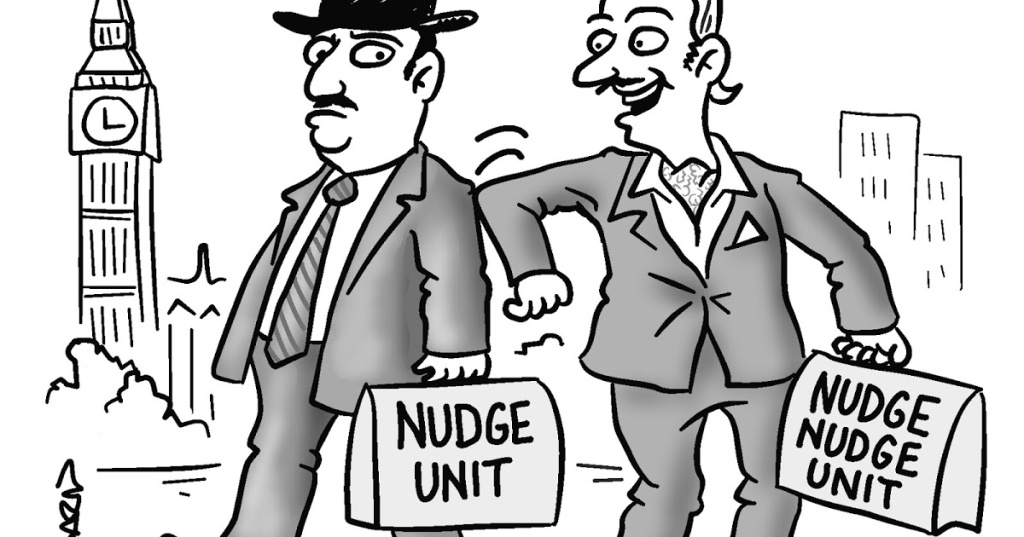
In short, Nudge is a strategy for helping people make better choices. The tricky bit is who gets to decide what “better” means. Many of us are what the authors call “choice architects.” A choice architect is anyone who is orchestrating a situation where another person has to make a decision. This can be official and complex like a human resource person setting up a benefits package selection or very simple and personal, for example offering up options for selection which restaurant to meet in. It turns out that how and in which order you layout options dramatically influence the final choice.
The authors Paternal Libertarian. That is, they believe the institutions have the right and responsibility to influence choices but defend the right of the individual to override the institutional choice. Sort of a maximum choice but we think this is the right one for you sort of situation.

The book reviews a number of biases that humans use in their decision-making process. A couple of the most important ones are “status quo bias” and “herd mentality.” A status quo bias simply means the tendency for people to continue doing what they have been doing, regardless of the situation has changed. Sort of a mental inertia. A great example…..at least for us older people….is the old record club. Sure, you do get 11 albums…long play even….for a penny as long as you agree to the monthly delivery. Enough of the people who sign up for that initial amazing deal forget to cancel their payment each month to make it profitable for the companies to continue to offer this huge loss leader. Herd mentality is where people tend to take the most popular choice….the same as everyone else…..regardless of their personal opinion. In a Nudge situation, this could be offering two choices: A and B. Then putting the words “Most popular” behind the choice you wish the decider to make.
The book is a little overly long in my opinion but definitely worth the read.
What do customers want? Drill Deeper
“No one wants a 1/4″ drill bit. They want a 1/4″ hole.” – Harvard Business School – Theodore Levitt.
Professor Levitt’s very profound statement is a whole semester’s worth of wisdom for marketing students. Too many marketers…….and I’ve been part of this team too many times to count as well……dive right in with solutions without really understanding the problem. Of course, most of us in business have one big problem, that is grow sales. But as marketers, we need to realize that our problem isn’t our customer’s problem. They have their own needs and our job as marketers is to understand their needs even better than they do.
By saying that people don’t want the drill bit, they want the hole, Professor Levitt is trying to get us to reach a little further into the customer’s need states before we push forward trying to provide them solutions. Perhaps there are other ways, better ways, to deliver a 1/4″ hole than the drill bit. Perhaps when the customer is asking for a 1/4″ drill bit, they are using it to do something different than make a hole……I don’t know what that might be…..but it is possible.

Professor Levitt didn’t quite go far enough though. Why does the customer want a 1/4″ hole? I argue that they don’t. The customer really wants whatever project the 1/4″ is going to help build. Maybe hanging a painting or laying a wood floor. When you understand that, it can help you be sure that your tool and marketing are tuned into what the customer needs. For example, and admittedly, I am not a woodworker, someone hanging pictures may want a laser leveler built right into the drill. Maybe laying floor would be easier if there was a stop built into the drill bit so the carpenter doesn’t drill too deeply. Yes, feel free to correct my poor knowledge of wood working in the comment section.
But are we done yet? I say no. One key to understanding the customer is to realize that people don’t make purely intellectual decisions. We make decisions based on emotional triggers. Intellect can be used to inform our emotions and judgements but it is not the final deciding factor. Therefore, why does the woodworker want the project finished? A person who simply has a passion for working with wood may have different needs than a person who is earning a living that requires 1/4″ holes.

The deeper you drill, ok pun intended, into the customer’s needs, the better you can serve them. The better you can serve the customer, the easier it is to grow your sales.
3 Reasons Why Marketing is so Hard
The tasks of marketing, whether we are talking about traditional marketing, product marketing or new (digital) marketing, really aren’t that hard. At least, they shouldn’t be. Marketing can be broken down into a handful of tasks; find out what your customers want, work internally to ensure you can produce it at a profit, get it placed in distribution and then promote (communicate) it out. Not that difficult. Right?
My Foundations of Marketing class starts tomorrow night. As it stands, I have 36 students and only 9 of them are marketing majors. Believe me, the other students aren’t there because of my reputation as an amazing teacher (despite what the students trying to get into my class off the wait list tell me). The other 27 students are required to be there. The majority of them are finance and accounting majors. I remember many many years ago being a finance major being required to take a marketing class. Yuck, naïve me thought. Marketing is so easy. Hardly worth my time to pay attention. My goal tonight it to convince them that markets isn’t so easy after all. I have three reasons why……if you have more, please share them in the comments section.

1.) The putz on the other side of the board. Probably the most powerful reason that marketing is difficult isn’t because the tasks are so hard, it is because you are actually competing with dozens if not millions of competitors…..and that is only direct competitors. I just googled “how many soda producers are there” and according to the internet (so you know it must be correct) there are ten soda producers in North America. Those are the national producers anyway. So if you are Coke, you have nine other national producers you have do compete against.
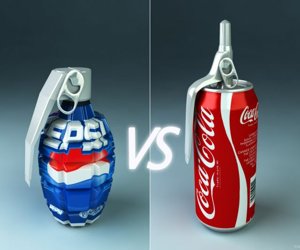
But that’s not the end of the competition. Coke also has to compete with hundreds of local soda manufacturers. For example, my original list didn’t show Moxie Soda from Lowell Massachusetts. If I’m in Massachusetts……and close to Lowell, I might chose to satisfy my thirst with the local Moxie over Coke.
But WAIT! That’s not the end of the competition. As a thirst consumer, maybe I’ll quench my thirst with tea, coffee or water. Any of those would serve my thirsty needs as well as Coke and potentially be healthier. As Coke, I have to take into consideration, not just those products I’m competing against but all of their marketers as well. Especially being number one, everyone is out to replace Coke as the drink of choice, at least, for their highly segmented target market.
But WAIT! That’s not the end of the competition……A thirsty consumer might just decide to postpone drinking. This could be because of specific rules, no drinking in class. It could also be because of price, access to funds, inconvenience or a number of other reasons. The final competitor that Coke must deal with is the consumer themselves.
In class, I’m going to try to press this fact by showing a 90 second video that does a really decent job teaching the game of chess. That’s pretty easy. If you can learn it in 90 seconds, chess can’t be that hard. Then I’m going to introduce the class to Tania Sachdev. Tania is an amazing chess player. She grew up in India. I believe her mom taught her chess at age six. She was winning championship before she was twelve and she would wipe the floor with each and every person in my classroom (myself included) in chess……probably simultaneously.

Chess is easy…..unless you are competing against someone like Tania. Similarly, the functions of marketing aren’t that hard. You just have to do them better than your competition.
2.) Consumers lie! Consumers will occasionally lie to market researches. Consumers will frequently lie to themselves. Ok, that was a little dramatic but still true. You can ask customers what they want or why they did something. They will tell you but what they say may not be true. Mainly it isn’t an intentional lie.
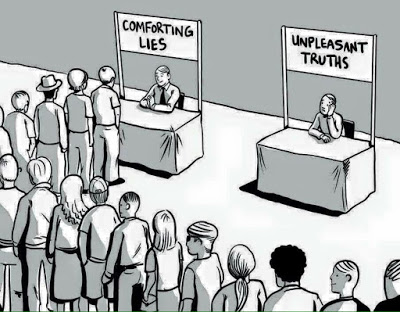
Some of the issues is that the consumer really doesn’t care. Am I really going to let the restaurant know when they did a fairly reasonable job with my meal but it really could have used a little more sauce? Not likely. They were competent. I’m not motivated to tell them their little failures (a.k.a. opportunities for improvement). I just might go eat somewhere else, the place that gives a lot of sauce, the next time.
Another issue with consumers is that the ones who are willing to talk to you might not be representative of the feelings all of your customers. You may be working to change your entire system because a small percentage weren’t happy. Worst yet, what those customers are complaining about might be what the majority of your customers love.
Consumers lie to themselves all the time as well. Think of the middle aged guy who suddenly buys a sportscar. Ask him. He’ll tell you all about horsepower, torque (whatever that is) and the zero to sixty in a tenth of a second. Do you really think any of those features are why he bought the hard? It is more likely that his forehead and belt are both growing. The love of his life has heard all of his funniest anecdotes. He needs to feel young and powerful and wanted again. I’m waiting for a sportscar to give a truly honest commercial. “We aren’t the little but we can get you to a pharmacy two towns over faster than a Corolla!”
Sometimes consumers will try to solve a need…….that just aren’t that good at it. A friend who was an engineer for high risk respiratory product. You know when they wear the full body suits with a air supply hose dragging behind them in scary movies? That. One customer complained that when they had to crawl around small spaces, they could kneel on the hose………yeah, no air. So they asked him to design a hose with a metal spring in it, so it couldn’t be crushed. Can you imagine dragging around a fifteen foot spring connected to your face? Sounds awful. Their problem was the air supply getting cut off. My friend designed a solution, which I won’t get into, that was lighter and more flexible than the spring and, more importantly, didn’t kill the worker.

There are all kinds of biases, both from the consumer and from the research, which I’ll get into in another post. The point here is that you, the marketer, has to interpret the consumer better than the competitors’ marketers.
3.) Conflicting priorities – The marketer frequently has limitations put on them by Finance, Accounting, Sourcing, Demand Planning, Legal and Executive Team. I know a lot of marketers call these departments the “sales prevention team,” which I don’t think is fair at all. They have a role to play in making the company profitable as well. The marketer does well to understand their internal team’s goals, so that you can work with them, instead of trying to fight against them.
Keep in mind the wisdom a former boss told me, “People do what they are paid to do.” I don’t know how many times I’ve heard a marketer or even an executive say, “I’m just going to tell supply chain to increase inventory.” If supply chain’s bonuses are based on keeping inventory low, you can tell them all you want. They may even say, “sure.” They may even add inventory on that one product you are asking about…..and lower inventory on all the other products in their portfolio.
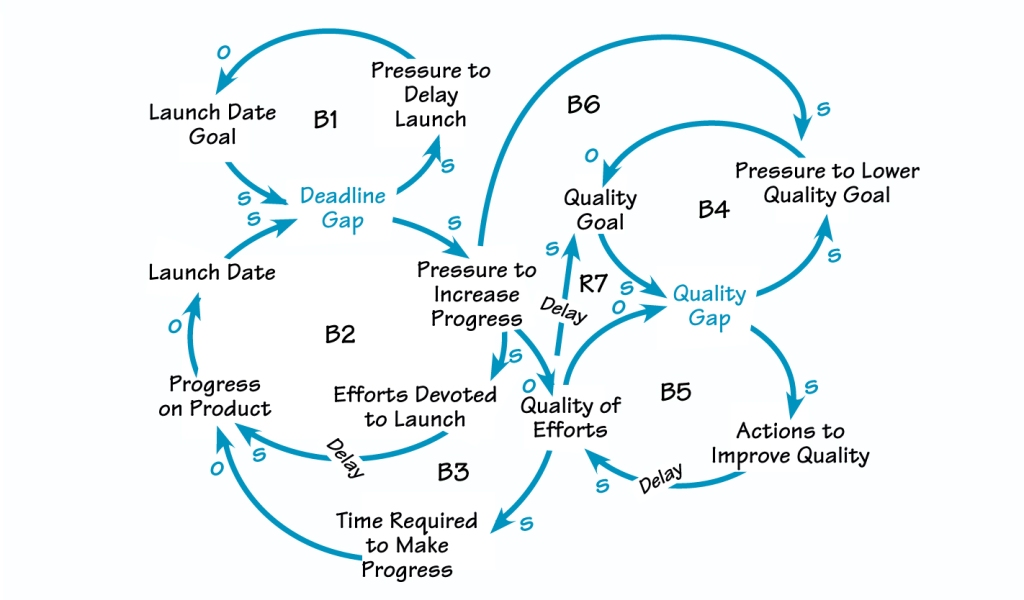
Sales is going to push the marketer to have as much inventory as possible. Keep in mind that your cost of inventory is going to be somewhere in the 10 to 20 percent range (cost of money, insurance, warehousing, etc). So taking your inventory up from a two month supply to a three month of supply is going to lower your margin by 2%……..are you going to eat that or are you going to increase your price. When sales asked me to increase inventory levels and I said, “sure but I’ll need to raise the retail price by $10 to pay for it,” they quickly backed off of their request.
Let’s do one more department. Demand Planning is given bonuses for giving accurate forecasts. Sales think an accurate forecast is a forecast that is less than what they actually sold. I’ve had a great person and salesman tell me that he was a fantastic forecaster because out of the last 36 forecasts, his actuals only came in below his forecasts once……..In marketing, we call that a sandbagger. How much excess and obsolete inventory would have been created if the company produced to his forecasts? The Demand Planner aims to be over forecast 50% of the time and under forecast 50% of the time……you never hit the forecast. That just doesn’t happen.
A marketer must not only understand the consumer but must be able to work within the constraints of their company and their conflicting goals.



